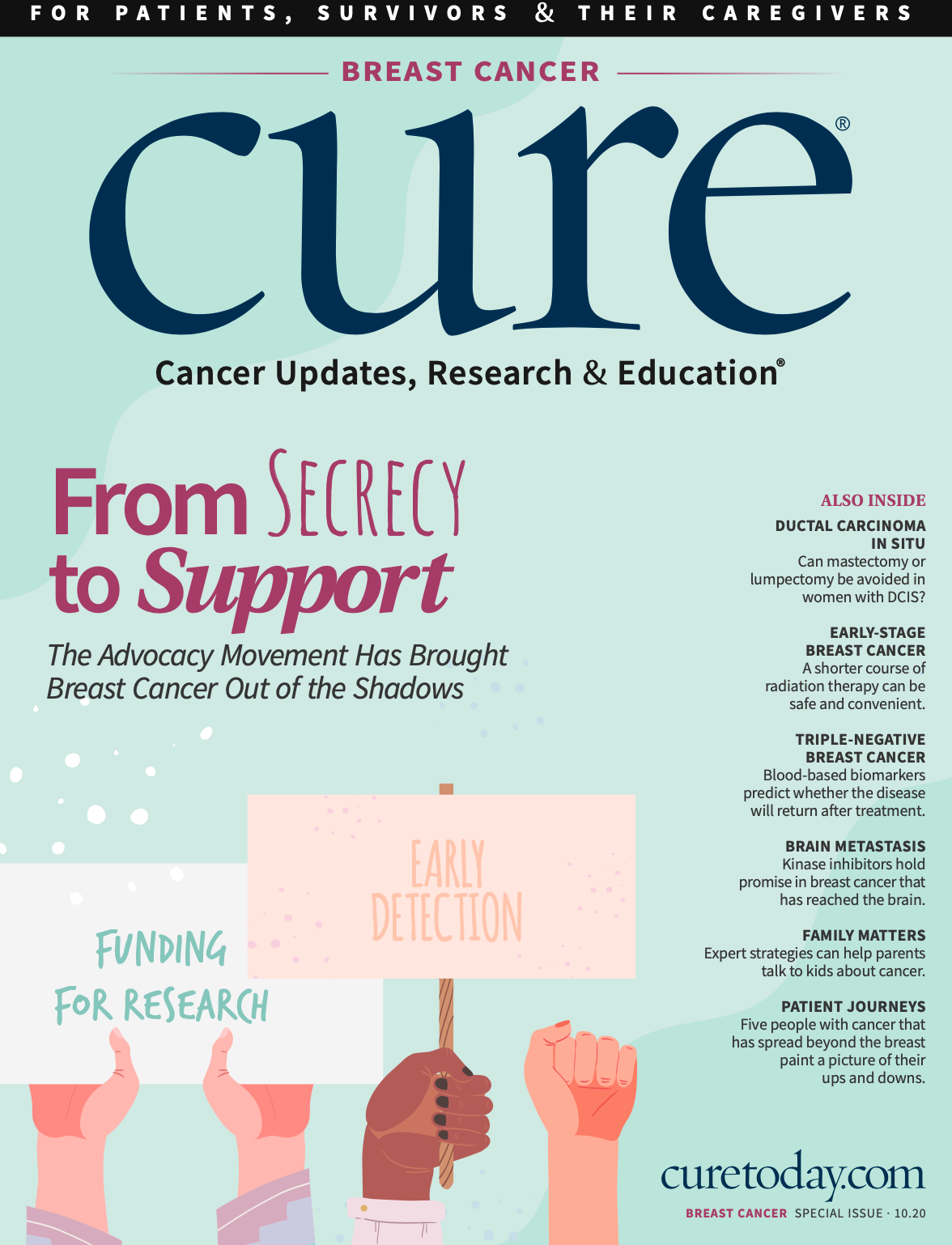Publication
Article
CURE
A Week of Radiation Therapy Following Early-Stage Breast Cancer Surgery Appears as Safe and Effective as Longer Courses
Author(s):
Just one week of radiation therapy after surgery for early-stage breast cancer is as safe and effective as longer courses, researchers report.
Radiation therapy for early-stage breast cancer once stretched out over many weeks; the current international standard involves higher doses spaced out over three weeks. Now a team of researchers says that giving even higher doses of radiation across only five sessions in select cases, completing the therapy in one week, is equally effective.
In addition, the scientists found the safety profile of the weeklong treatment to be as good as
that of the standard three-week course, which is administered in 15 sessions.
The findings, based on five-year results of the randomized phase 3 FAST- Forward trial conducted in the United Kingdom, were published in The Lancet.
After surgery, many patients with early breast cancer undergo whole- or partial-breast radiation therapy to help prevent recurrence. The radiation is directed at the whole breast or, after mastectomy, the chest wall. In many countries, hypofractionated, or accelerated, radiation treatment has replaced longer courses of therapy for most patients, according to the study’s authors. Sometimes a supplemental, or boost, a dose of radiation to the conserved breast follows this treatment.
Patients may prefer a shorter radiation schedule because it involves fewer trips to the clinic and is more convenient. In addition, an abbreviated course may be beneficial during the COVID-19 pandemic because it limits opportunities for exposure to the virus. “The one-week schedule has major benefits over the three-week or five-week regimens in terms of convenience and cost for patients and for health services globally,” the researchers wrote.
Conducted at 97 centers, the study included adults who had recently undergone lumpectomy or mastectomy for early-stage invasive carcinoma of the breast. Tumor size had to be 5 centimeters or less, and the cancer could have spread to no more than three lymph nodes. Patients who were receiving hormonal therapy for breast cancer at the time they received radiation were permitted to participate. Enrolled between Nov. 24, 2011, and June 19, 2014, the 4,096 participants were divided into three roughly equal groups to receive one of three regimens:
• 40 gray (Gy) given in 15 treatments, or fractions, of 2.67 Gy over three weeks.
• 27 Gy in five treatments of 5.4 Gy over one week.
• 26 Gy in five treatments of 5.2 Gy over one week.
Participants who had undergone lumpectomy were eligible to receive a boost dose to their conserved breast following radiation therapy.
The study’s main goal was to measure the rate of local tumor recurrence in the originally affected breast five years after radiation therapy, with the rate of relapse in the weeklong treatment groups not significantly exceeding the 2% recur- rence rate expected over five years of follow-up after the standard 40-Gy, 15-treatment dose. At a median follow-up of nearly six years, relapse had occurred in 31 patients in the 40-Gy group, 27 in the 27-Gy group and 21 in the 26-Gy group, giving five-year recurrence rates of 2.1%, 1.7% and 1.4%, respectively. Statistically, the results were considered similar. Relapse was more likely to arise in patients who had higher-grade primary tumors, the authors found.
At five years after treatment, changes at the radiation site (scarring or hardening) were observed in 98 of 986 patients (9.9%) who received 40 Gy of radiation, 155 of 1,005 (15.4%) who got 27 Gy, and 121 of 1,020 (11·9%) treated with 26 Gy. The most common side effect was breast shrinkage, which happened in 5.5%, 8.2% and 6.8% of people treated with 40, 27 and 26 Gy, respectively. Breast distortion was also more likely in those who received 27 Gy compared with 26 Gy.
“Patient and photographic assessments showed higher risk of normal tissue effects for 27 Gy versus 40 Gy but not for 26 Gy versus 40 Gy,” the authors wrote. In addition, although they hypothesized that the heart should not be more sensitive than other soft tissues to radiation intensity, the researchers noted that longer follow-up is needed to draw conclusions about the effect of the radiation schedules on cardiac outcomes; they plan to conduct patient follow-up until at least 10 years after treatment. There were no deaths due to radiotherapy, and there was no difference in the rate of secondary cancers between the groups.
“(Giving) 26 Gy in five fractions over one week is non-inferior to the standard of 40 Gy in 15 fractions over three weeks for local tumor control and is as safe in terms of normal tissue effects up to five years for patients prescribed (postsurgical) local radiotherapy after primary surgery for early-stage breast cancer,” the researchers concluded. “The consistency of FAST-Forward results with earlier hypofractionation trials supports the adoption of 26 Gy in five daily fractions as a new standard for women with operable breast cancer requiring (postsurgical) radiotherapy to partial or whole breast.”




